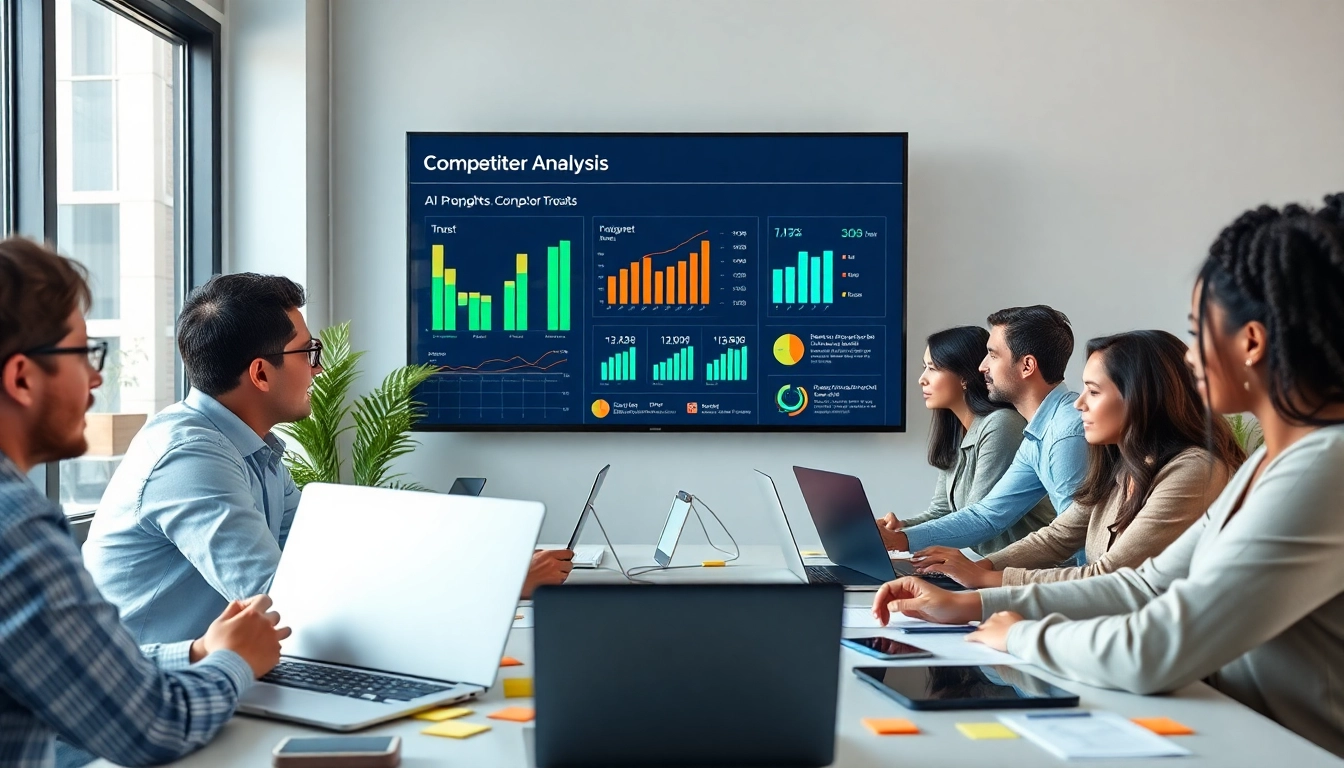Understanding the Basics of Website Design
In an age where digital presence is synonymous with business credibility, understanding the nuances of website design is crucial for success. This complex discipline encompasses various skills and principles aimed at creating functional, aesthetically appealing, and user-friendly interfaces that enhance online communication. In this article, we will delve into the core components of effective website design, emphasizing user experience as a vital element in shaping interactions with your audience.
What Is Website Design?
Website design is the process of planning, conceptualizing, and arranging content intended for the web. A well-designed website is not merely about visual aesthetics; it includes the overall structure, usability, and responsiveness across different devices. Different areas of web design include graphic design, interface design, authoring, and search engine optimization (SEO), contributing to an overall effective user experience.
Key Components of Effective Website Design
Effective website design integrates various key components to achieve functionality and engagement:
- Layout: The structure of the website, including how information is distributed across pages, plays a vital role in usability.
- Color Scheme: Color influences perception and user interaction. A well-chosen color palette can evoke emotions, strengthen brand identity, and enhance readability.
- Typography: The fonts utilized can impact readability and aesthetics. Ideally, the typography chosen should support the brand’s message while ensuring clarity of content.
- Navigation: An intuitive navigation system allows users to find what they are looking for easily, fostering a positive experience.
- Imagery: High-quality images enhance visual appeal and can convey messages more effectively than text alone.
- Consistency: Maintaining a consistent style throughout the website fosters familiarity and aids user navigation.
Importance of User Experience in Website Design
User experience (UX) is at the heart of effective website design. It encompasses all aspects of the end-user’s interaction with the company, its services, and its products. A strong UX design not only attracts visitors but also keeps them engaged, reducing bounce rates and increasing conversions. Key considerations for enhancing UX include:
- User Research: Understanding the target audience is crucial. Through methods such as surveys and usability testing, designers can tailor experiences that meet user needs.
- Accessibility: Websites must be navigable for people of all abilities. Compliance with accessibility standards ensures that all users can engage with the content.
- Performance: Site speed directly impacts user experience. A slow-loading website can frustrate users, leading to abandonment.
Essential Tools for Website Design
Crafting an exceptional website requires the right tools. Both novice and professional designers can benefit from various software and platforms that streamline the design process.
Design Software for Beginners
For those just starting, user-friendly software options can help ease the learning curve:
- Canva: Known for its drag-and-drop interface, Canva offers a wide array of templates suitable for various design needs, including web graphics.
- Adobe Spark: This tool enables simple creation of web pages without needing advanced design skills, ideal for beginners.
- WordPress: As a content management system, WordPress is accessible for beginners looking to build a website with minimal coding knowledge.
Advanced Tools for Professional Designers
Professional designers often utilize more sophisticated tools:
- Adobe Creative Suite: Tools like Adobe Photoshop, Illustrator, and XD are industry standards for creating advanced graphics and layouts.
- Figma: A collaborative interface design tool allows multiple users to work on projects simultaneously.
- Sketch: This vector graphics editor is primarily used for UI and UX design in web and mobile applications.
Choosing the Right Platform for Your Website Design
Selecting the right platform can significantly enhance the design process. Considerations include your technical expertise, the scale of your project, and specific needs:
- Custom Development: For those needing unique functions or branding, custom development offers tailored solutions but requires coding knowledge.
- Website Builders: Platforms like Wix and Squarespace allow users to build sites with no coding through customizable templates, making them ideal for non-technical users.
- Content Management Systems (CMS): WordPress remains a favorite for its versatility and extensive plugin options, catering to both developers and beginners.
Best Practices for Responsive Website Design
With the rise of mobile device usage, the importance of responsive design cannot be overstated. A responsive website adapts seamlessly across various devices and screen sizes, ensuring that users have a consistent experience.
What Makes a Website Responsive?
A truly responsive website is characterized by:
- Fluid Grids: Using relative units like percentages rather than fixed pixels allows content to scale proportionately.
- Flexible Images: Images should be adaptable to various screen sizes without losing quality or aspect ratio.
- Media Queries: CSS techniques that apply different styles for different devices or screen sizes to enhance adaptability.
Testing and Optimizing Your Website Design
Testing is an integral aspect of the design process. It ensures that the site is functioning well across devices and browsers. Effective optimization strategies include:
- Usability Testing: Conduct tests to gather feedback on site functionality and user experience.
- Load Testing: Simulate traffic levels to identify how the website performs under stress.
- Analytics: Utilize tools to track performance metrics, adjusting strategies based on real-user data.
Common Mistakes to Avoid in Website Design
Avoiding these common pitfalls can significantly enhance the quality and usability of your website:
- Poor Navigation: An unclear or complicated navigation system can frustrate users, leading them to abandon the site.
- Overdesign: Excessive graphics or complex layouts can distract from the primary purpose of the site—delivering content effectively.
- Ignoring Mobile Users: Given the prevalence of mobile browsing, not optimizing for mobile can alienate a large segment of potential visitors.
Trends in Modern Website Design
Staying current with design trends can enhance user engagement and set your website apart. Understanding contemporary aesthetics and functionalities will enable you to connect better with your audience.
Current Design Aesthetics
Modern design trends embrace minimalism, allowing content to shine without unnecessary distractions:
- White Space: Effective use of white space provides breathing room, allowing for easier reading and navigation.
- Bold Typography: Large, eye-catching fonts create strong visual hierarchies and draw attention to critical elements.
- Micro-Animations: Subtle animations enhance interactivity and can guide users through specific actions.
Innovative Features to Engage Users
Incorporating interactive elements can significantly improve user engagement. Consider features such as:
- Chatbots: Incorporating AI chatbots to assist users can improve service and engagement on your website.
- Personalized Content: Utilizing data to deliver tailored content enhances user experience and promotes return visits.
- Augmented Reality: Implementing AR can create immersive experiences that allow users to engage with products in new ways.
Future Predictions for Website Design
As technology continues to evolve, so too will website design trends. Expect to see:
- Increased Integration of AI: AI will become more prevalent in creating personalized website experiences.
- Voice User Interface (VUI): The rise of voice search will influence design towards more voice-command compatible interfaces.
- Sustainability Features: As environmental awareness grows, incorporating sustainable design practices may become a necessity.
Measuring the Success of Your Website Design
To ensure that your website design is effective, it’s essential to measure its performance continually. Understanding key metrics and utilizing the right tools will help optimize user experience and reach your business goals.
Key Performance Indicators for Websites
Several critical performance indicators can help gauge the effectiveness of your website:
- Traffic Sources: Understanding where your website visitors come from allows for better targeting of marketing efforts.
- Bounce Rate: A high bounce rate indicates that visitors are not engaging with your content, signaling a need for redesign or optimization.
- Conversion Rate: Measuring how many visitors complete desired actions (such as signing up or purchasing) offers insight into the effectiveness of the design.
Tools for Analyzing Website Design Performance
Numerous tools are available to assess website performance:
- Google Analytics: Provides comprehensive data on user behavior, traffic sources, and performance metrics.
- Hotjar: Analyzes user interactions through heatmaps, recordings, and feedback, gaining insights into user behavior.
- PageSpeed Insights: Evaluates the loading speed of your website on both mobile and desktop, offering recommendations for improvement.
Continual Improvement Strategies for Website Design
Effective website design is an ongoing process rather than a one-time task. By implementing continual improvement practices, you’ll ensure that your website adapts to changing user needs and technological advancements:
- Regular Audits: Conduct periodic reviews of your website’s performance and design to identify areas for improvement.
- User Feedback: Actively seek user feedback to understand pain points and areas of success, adapting the design accordingly.
- Stay Informed: Keeping up with the latest design trends and technological features ensures your website remains competitive and engaging.















Leave a Reply